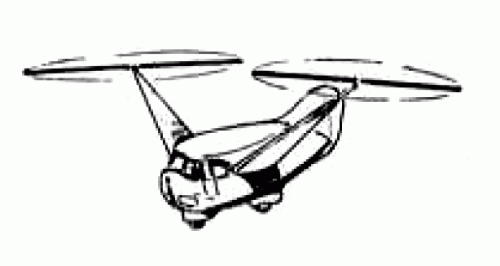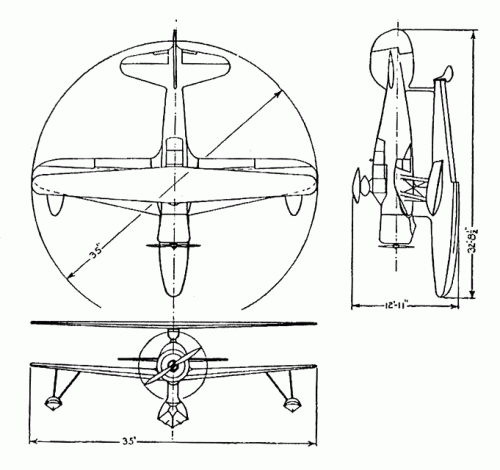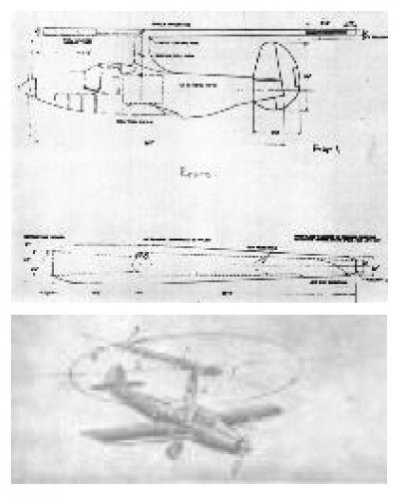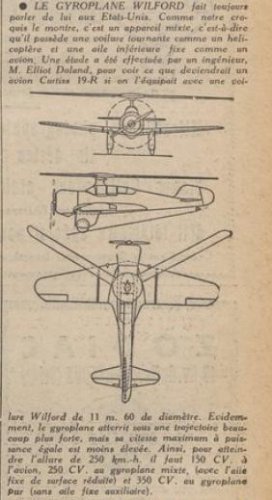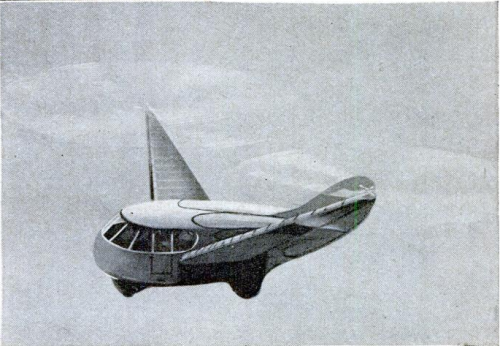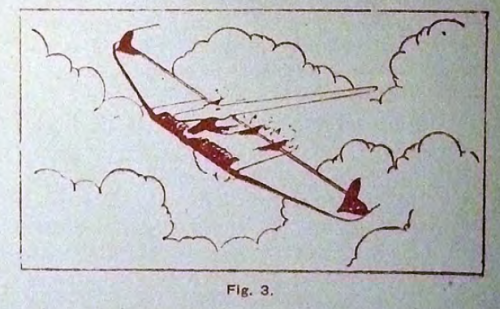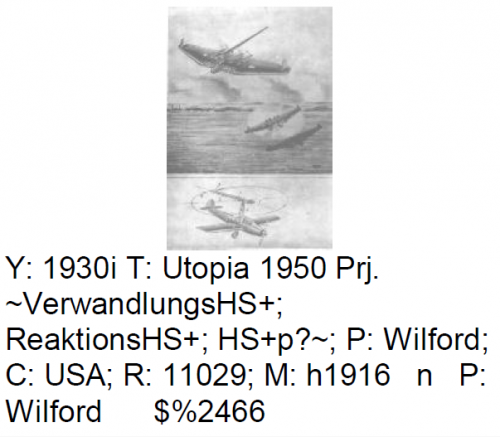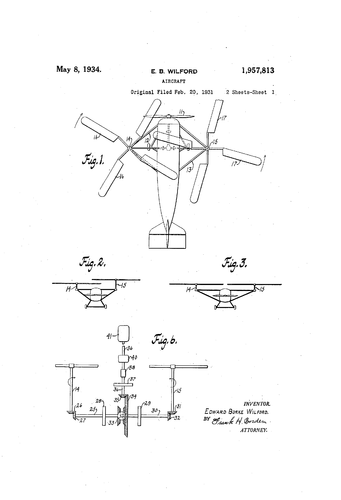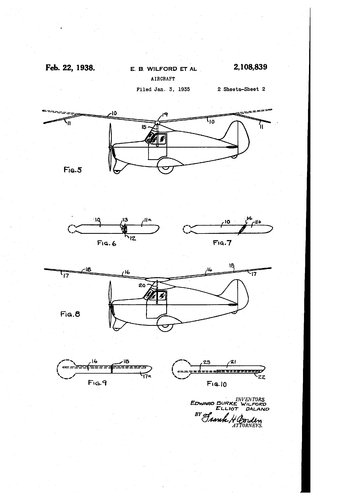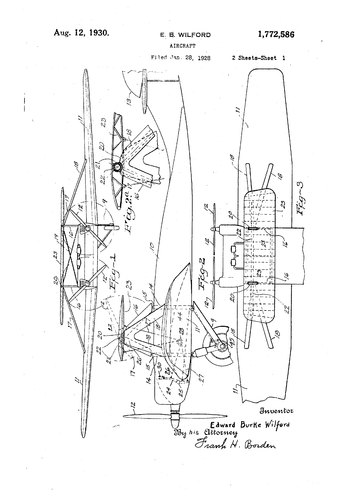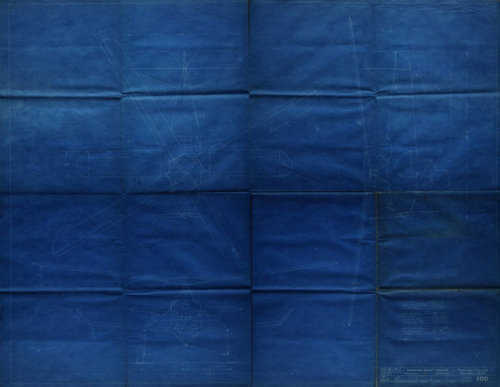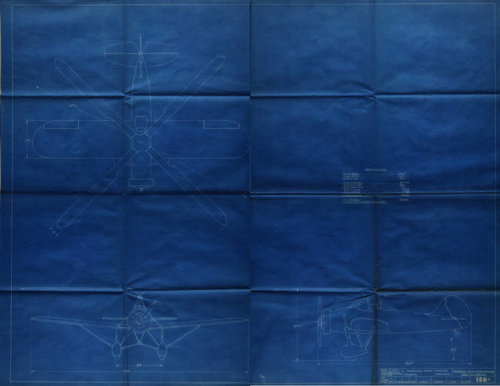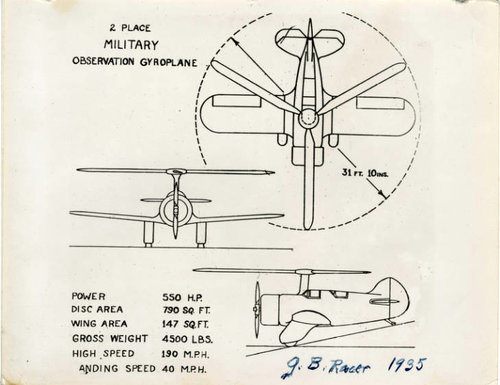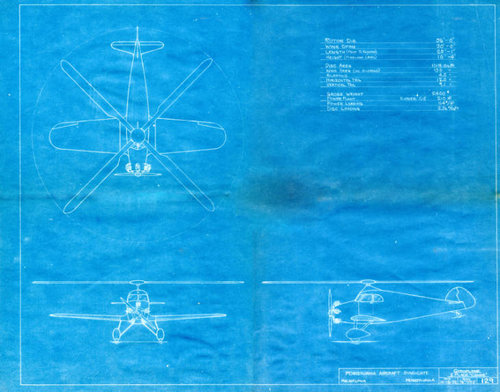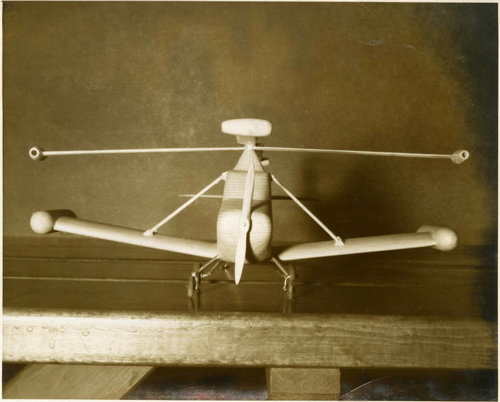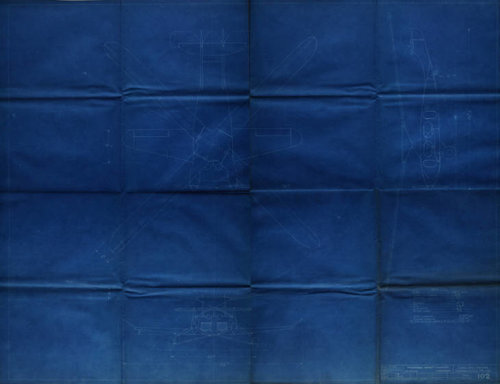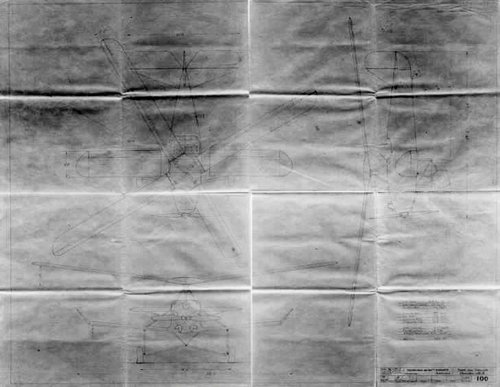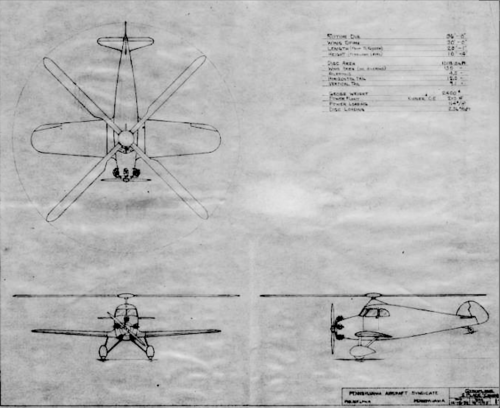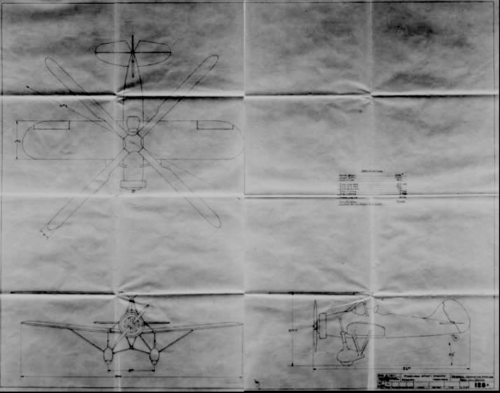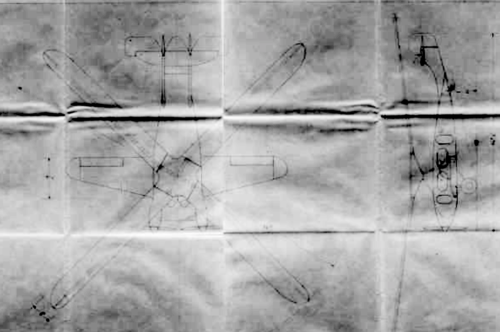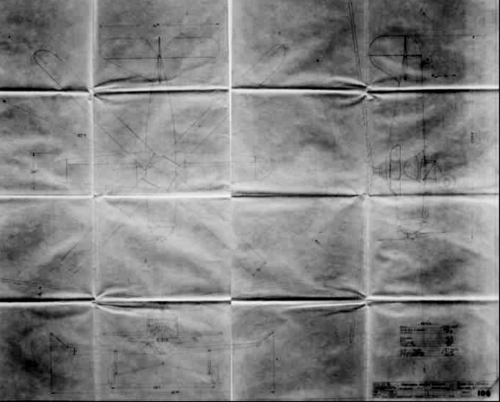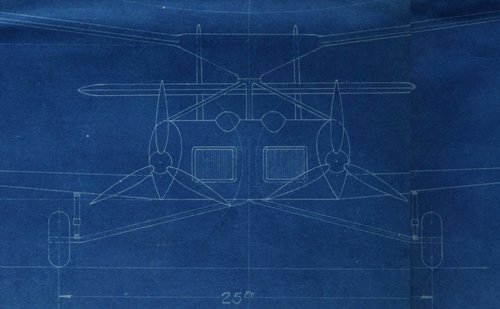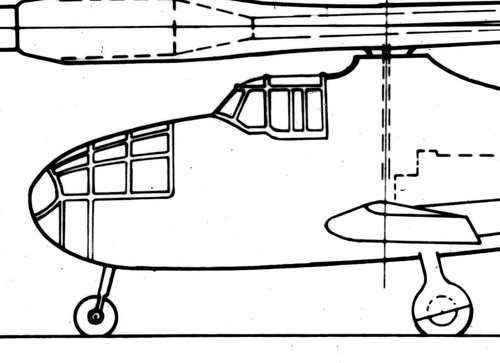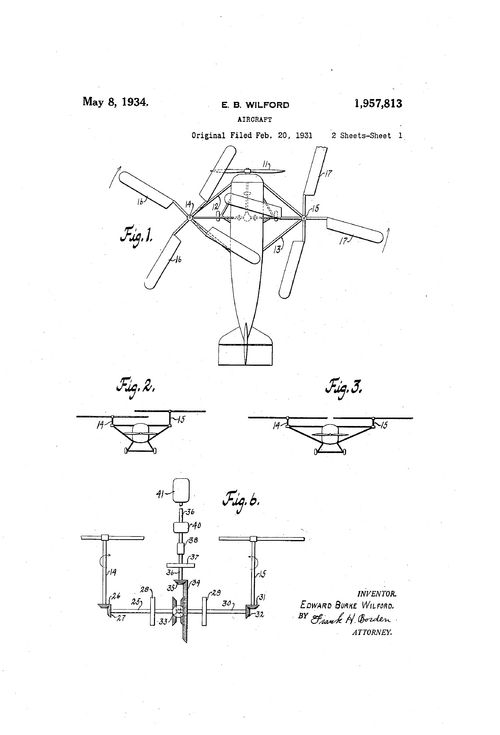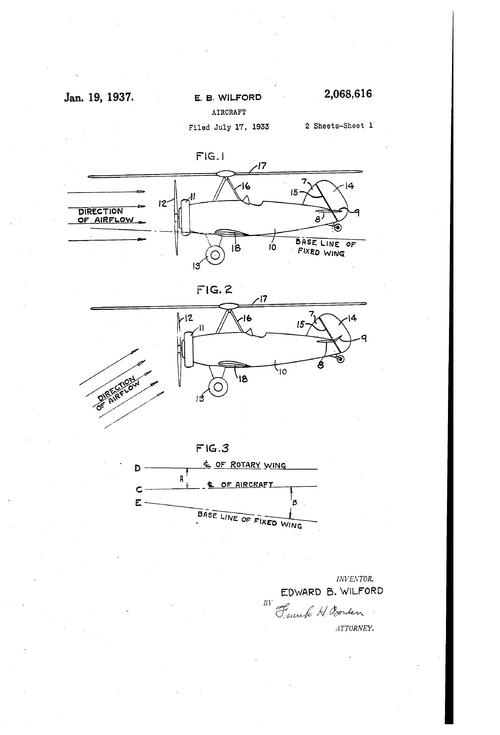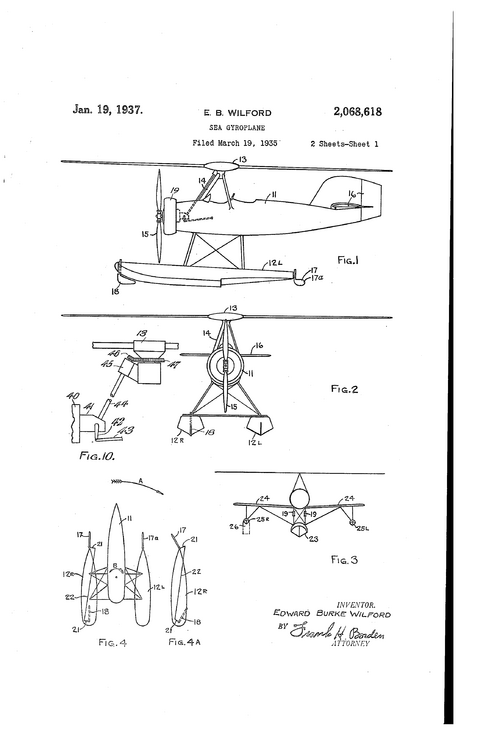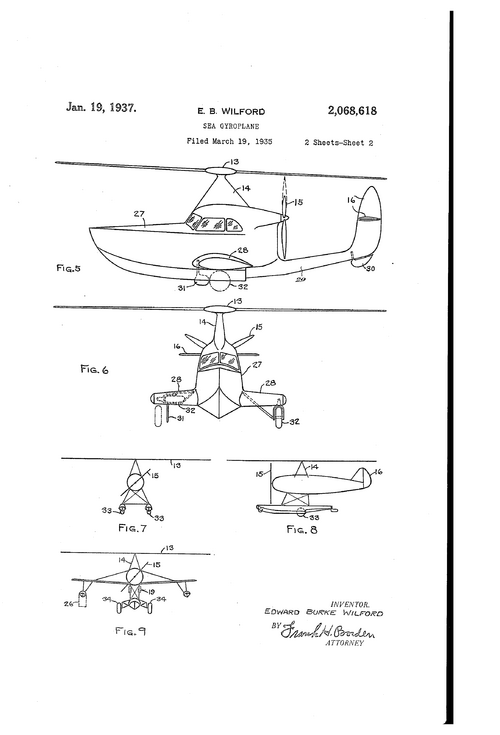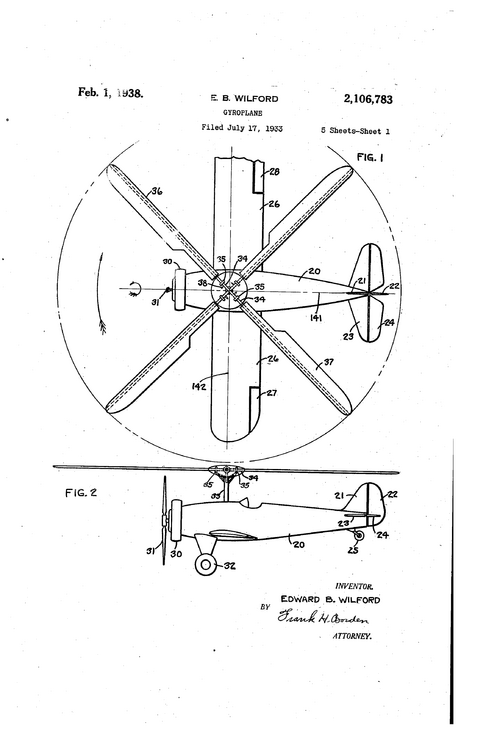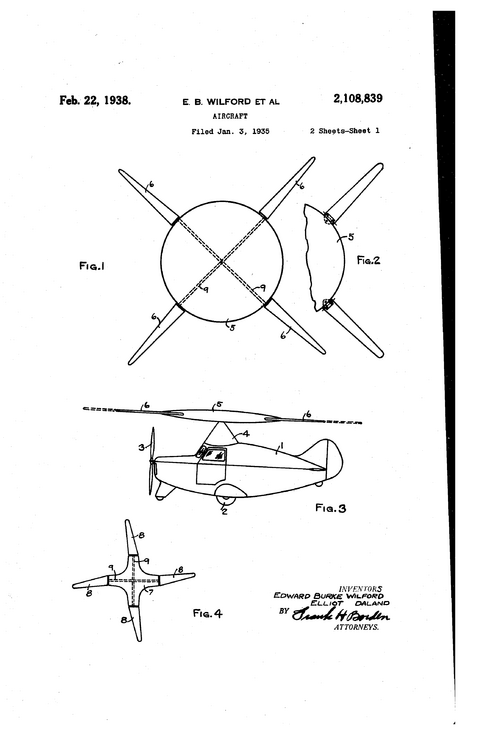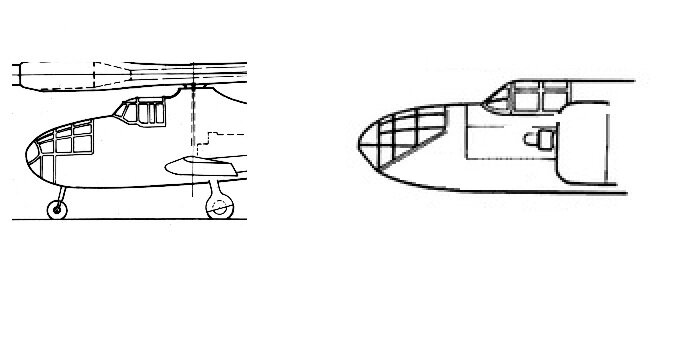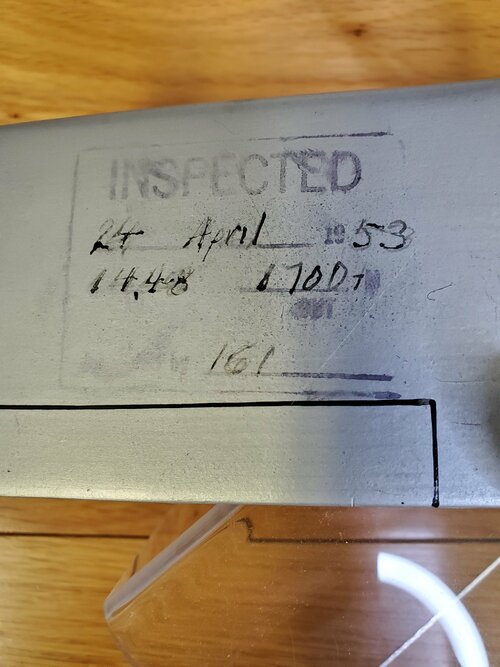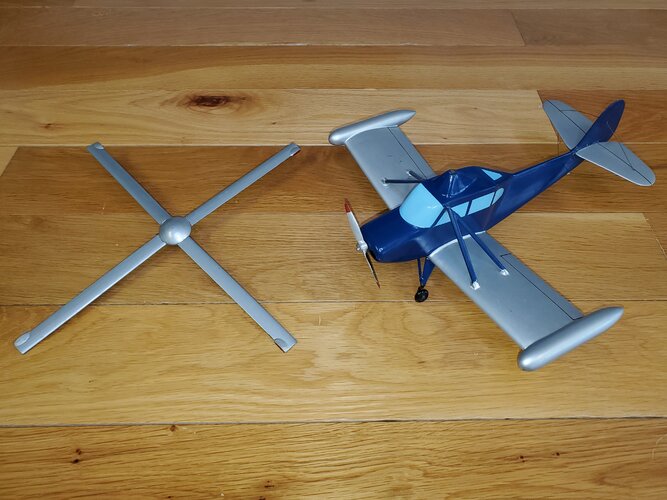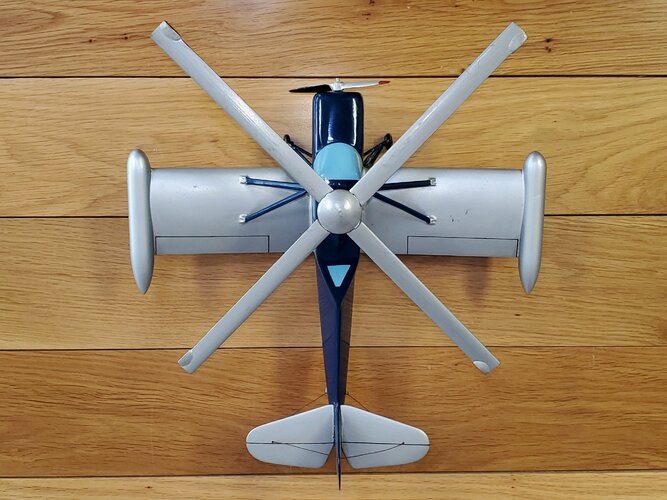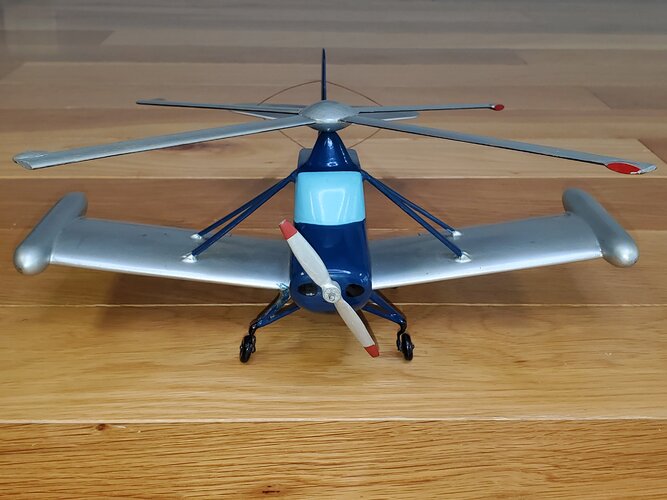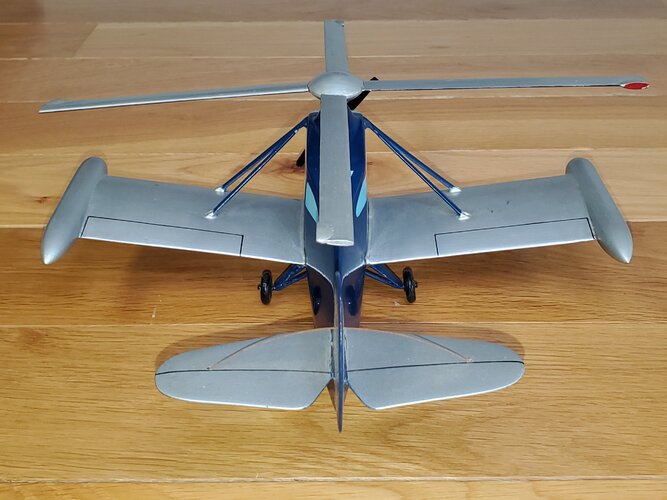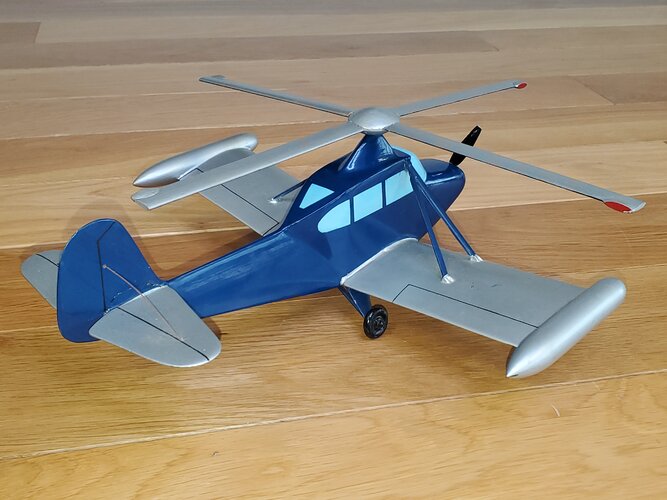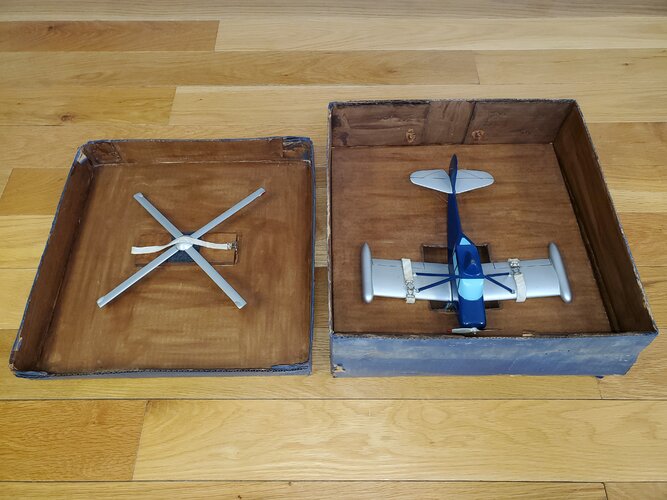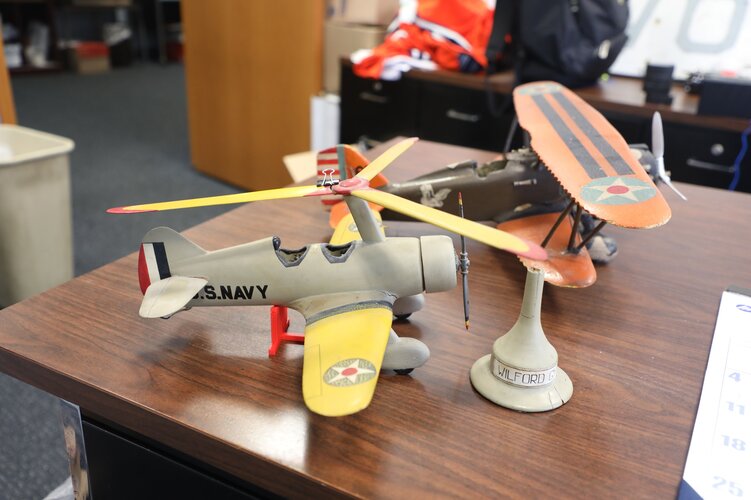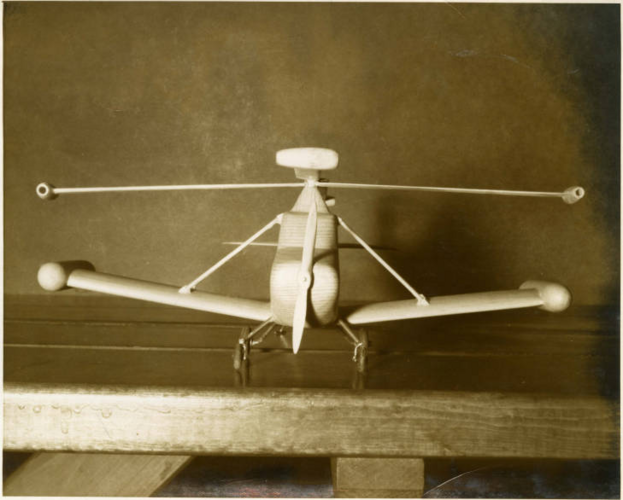I recently acquired a wonderful and unique wood model aircraft. I'm now trying to firmly identify it.
At first, I thought the model might be related to the development of de Havilland Cierva C.24 Autogiro. So I reached out to de Havilland, but could find no links. During my correspondence, and while conducting additional research, I stumbled upon this Secret Projects post. In particular, the photo of the wood "Gyroplane" model in a thread above really got my attention. As soon as discovered the "Gyroplane Model" image was from the E. Burke Wilford Aviation Collection (in the care of the West Chester University Special Collections library), pieces of the puzzle began to click into place. The model I purchased is nearly identical to the pictured Wilford "Gyroplane Model," the only discernable differences being the configuration of the main rotor tip-jets and the fact that my model is "finished" with a highly professional paint job.
The model I acquired is housed in a purpose-made box which secures the fuselage and removeable main rotor. The box is made of heavy corrugated cardboard, stained and painted. Elastic bands secure the fuselage and main rotor in place. Frankly, while the box is very cleverly made, the materials make it appear a bit "amateurish" when compared to the model. Nevertheless, the box is undeniably made for this model. The most noteworthy feature of the storage box is that the initials "W A C" are stenciled on the top. I feel fairly certain that "W A C" stands for Wilford Aircraft Corporation, the name of E. Burke Wilford's business venture during the 1950s. I've reached out to the Special Collections Library at West Chester University in the hope that they can find additional materials related to my model, helping me to confirm its origins.
My aircraft model has an 11.5 inch wingspan. The fuselage is 11 inches long and 5 inches tall. Some wire is used to strengthen landing gear, attach the main rotors, and act as tail bracing wires. The propeller is a lightweight metal as well. The rotor blades are wood and feature what appears to be sleekly-designed rotor tip-jets. Again, the paint quality is outstanding and just as professional as the build.
One particularly interesting (and puzzling) feature of the model is an inspection stamp on the bottom of the right wing. It is clearly dated 24 April 1953, but there is other data and information on the stamp that I have not yet been able to identify. Could it be a catalog stamp from the Wilford Aircraft Corporation model shop (if one truly did exist)? Did E. Burke Wilford make the model himself? What do the other numbers represent? Sadly, the stamp ink is smudged in a number of areas, so most of the legend information on the stamp is unreadable. The hand-written penned entries are also a bit difficult to completely understand. Here's my best interpretation:
Below the stamps "INSPECTED" title is the hand-written date "24 April 1953" in clear penmanship. It does appear that the inspector wrote the date in lighter letter ink, then changed to a heavier/darker ink and over-wrote the first entries. The second line is comprised of two pieces of data. There's no visible stamp legend, but the first entry seems to be "14,48" The second line entry looks like "1700" with either a small number "7" or possibly a "+" sign following. The stamp legend on this second line seems to have an "N" or possibly "/N" at the end of that second line of data. Unfortunately, the stamp legend describing the info the second line is smudged badly, so I'm not sure what the values represent. The final line of data on the stamp is likely "Inspected by 161," but the stamp legend is once again smudged. The word "by" in the stamp legend is pretty clear, though.
I've gone on too long... Here are some photos of the model and storage box. I welcome forum member's input as I continue to try and unravel this mystery.

